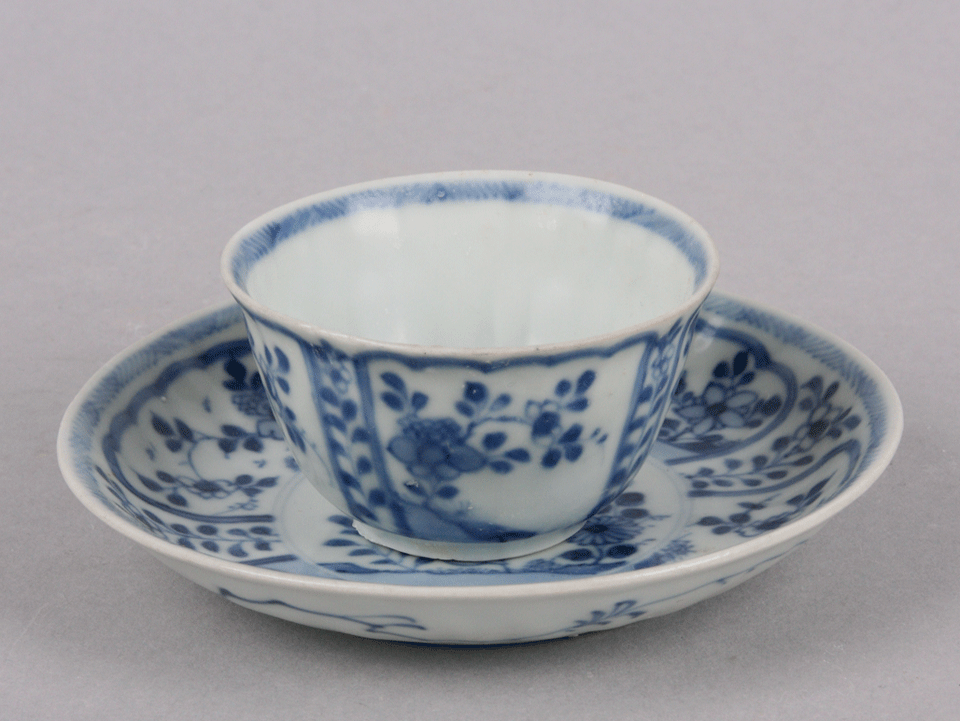
2012.91.113, blue and white ware teacup and saucer
Yongzheng period of the Qing dynasty, ca. 1726
Eason Eige Collection; Photo by B. Bernard

2012.91.113, blue and white ware teacup and saucer
Yongzheng period of the Qing dynasty, ca. 1726
Eason Eige Collection; Photo by B. Bernard
Although most of us use heavy "china" mugs for tea or coffee on most days,
we're familar with the teacups and saucers in formal tea and dining sets.
It's even a staple of American humor to drink from such a teacup with one's
pinkie extended, whenever the "good china" gets
dragged out of the hutch. But where did Western style teacups and saucers
come from?
The answer: along with tea itself, teacups and saucers began in China. The
originals looked slightly different than ours, however: the cups were much smaller
and
lacked handles, and the saucers were deeper. As Chinese porcelain makers
adapted their product to Western demand (and as European firms created
imitations of Chinese wares), teacups and saucers morphed into the serving size
(one cup!) and shapes we know today. On our page on
pieces made for the Western market,
you can see the change from what's shown above to what
teacups and saucers became. Or you can scroll down to see more examples of
teacups and saucers made in traditional Chinese style.
See source code for copyright information. Page last revised on February 29, 2016. Please report problems to toh@unm.edu